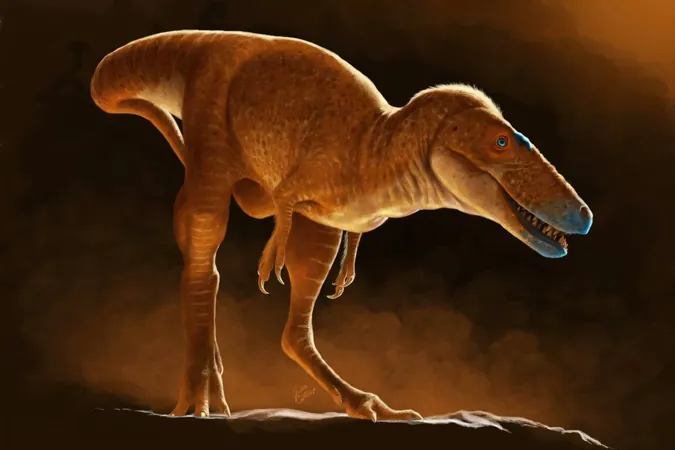
Ancient T-Rex Relative Uncovered in Mongolia: What This Means for Dinosaur History
2025-06-14
Author: William
In a stunning turn of paleontological events, researchers announced the discovery of a new species of tyrannosaur that challenges everything we thought we knew about the lineage of the fierce T-Rex. Hidden away in drawers at a Mongolian institute for over 50 years, misidentified bones have finally been recognized for their true importance.
The newly identified species, dubbed *Khankhuuluu mongoliensis*—which translates to "dragon prince of Mongolia"—was approximately four meters (13 feet) long and weighed around 750 kilograms (about 1,650 pounds). According to co-author Darla Zelenitsky from the University of Calgary, it would have been comparable in size to a large horse.
Originally unearthed in southeastern Mongolia during the 1970s, these fossils were mistakenly attributed to another known species, *Alectrosaurus*. For decades, they lay unnoticed, until a keen-eyed Ph.D. student, Jared Voris, stumbled upon them while exploring the institute's drawers.
Upon closer inspection, Voris discovered that the fossils were well-preserved partial skeletons of two distinct individuals from a never-before-seen species. This revelation raises intriguing questions: What other forgotten treasures might lurk in museum collections?
The impact of this discovery extends far beyond the fossil itself. Zelenitsky remarked that the new findings shed light on the complex and previously jumbled family history of tyrannosaurs. While the infamous T-Rex represents the end of a long evolutionary line as the apex predator in North America, *Khankhuuluu* reveals a different tale.
Interestingly, it's believed that around 20 million years before the catastrophic asteroid impact that wiped out most dinosaurs, *Khankhuuluu* or a closely-related ancestor made its way from Asia to North America via the ancient land bridge linking Siberia and Alaska, thus spawning various tyrannosaur species across the continent.
One of these North American species is thought to have migrated back to Asia, leading to the emergence of two distinct groups: one smaller and snouted, playfully dubbed "Pinocchio rex," and the other colossal, which included massive dinosaurs like *Tarbosaurus*, nearly the size of the T-Rex itself.
This lineage split eventually gave rise to the T-Rex we know, although it only ruled the Earth for about two million years before extinction loomed large with the asteroid strike.
In summary, the discovery of *Khankhuuluu mongoliensis* not only progresses our understanding of the tyrannosaur family tree but also provokes curiosity about the countless other fossils waiting to be rediscovered, potentially reshaping our understanding of dinosaur evolution.









 Brasil (PT)
Brasil (PT)
 Canada (EN)
Canada (EN)
 Chile (ES)
Chile (ES)
 Česko (CS)
Česko (CS)
 대한민국 (KO)
대한민국 (KO)
 España (ES)
España (ES)
 France (FR)
France (FR)
 Hong Kong (EN)
Hong Kong (EN)
 Italia (IT)
Italia (IT)
 日本 (JA)
日本 (JA)
 Magyarország (HU)
Magyarország (HU)
 Norge (NO)
Norge (NO)
 Polska (PL)
Polska (PL)
 Schweiz (DE)
Schweiz (DE)
 Singapore (EN)
Singapore (EN)
 Sverige (SV)
Sverige (SV)
 Suomi (FI)
Suomi (FI)
 Türkiye (TR)
Türkiye (TR)
 الإمارات العربية المتحدة (AR)
الإمارات العربية المتحدة (AR)